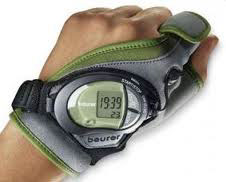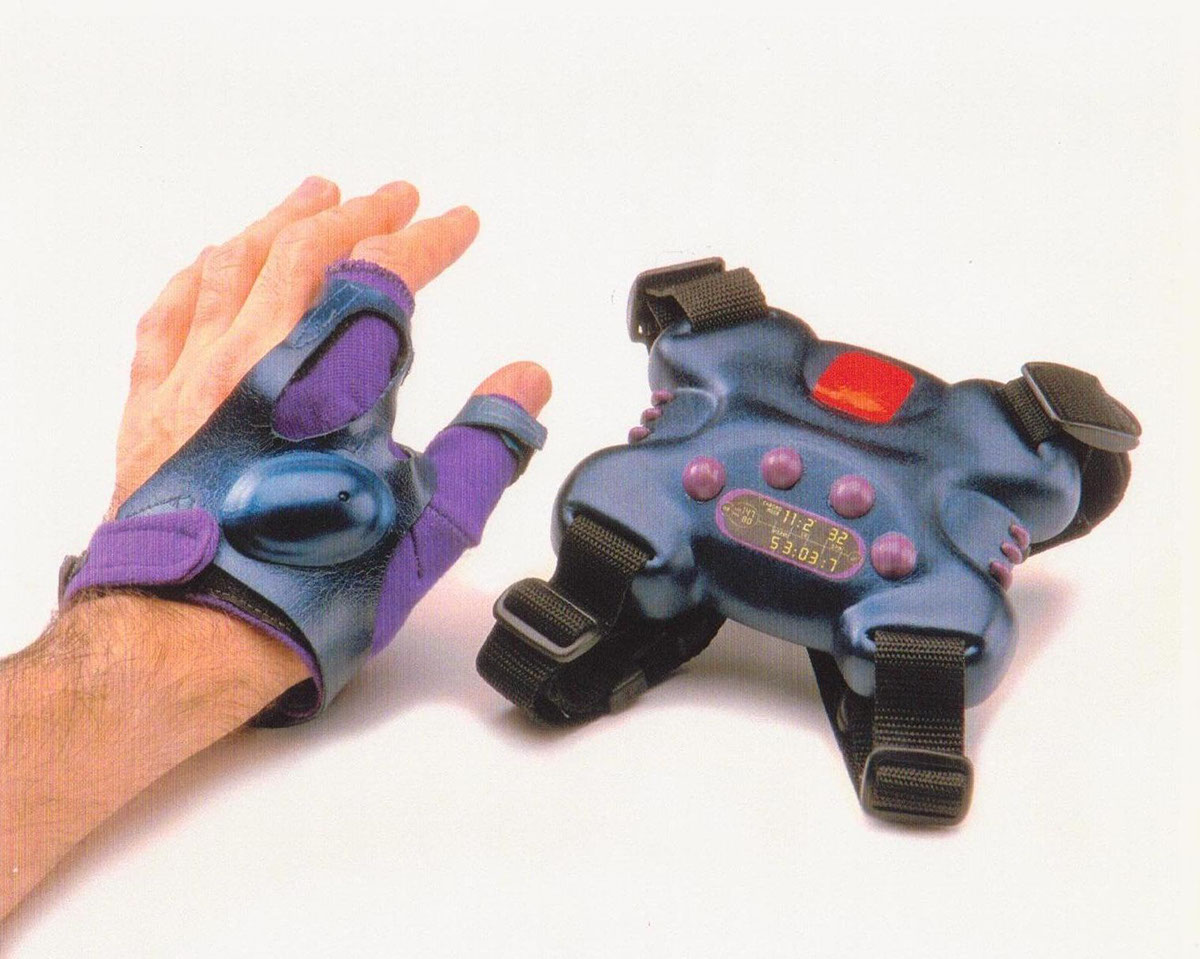
PROJECT: Data Gathering Tool for Canada's Slalom Kayak Athletes (1999)
Employer: Humber College of Applied Arts & Technology, Toronto, ON, Canada
Outcomes:
• Shocked and excited athlete market
• Designated as benchmark project for my graduating year
• Market Survey/Analysis kept as teaching tool
• Designated as benchmark project for my graduating year
• Market Survey/Analysis kept as teaching tool
• Beurer gmbh introduced near-match to glove, 8 years later (bottom of page)
The original concept was a dryland training machine with novel mechanical design (a 4-bar linkage). I wanted to create a system that captured evidence--actual data to shift performance in the sport from anecdotal to measurable.

BUT THERE IS A SIGNIFICANT DIFFERENCE between:
• What prospects say they need
• What they actually want, and
• What they believe will work
Humber emphasizes the business fundamentals, and my goal is to make a profitable business case. I couldn't see a great business growing out of the design. Consider these challenges:
Customer Psychographics
My mechanical advisor approved the design, but then I came to realize prospects did not believe ANY dryland machine would work, having tried the 11 other failing pseudo-machines already available (one gathers dust in a back corner at Madawaska Kanu Centre in Barry's Bay, Ontario). Not surprising as they do not work. Inventors took a rowing machine and added a pair of pulleys, without careful analysis of the human factors' aspect of fit, stroke motion, stroke rate, and paddling system dynamics.
Manufacturers' Suggested Retail Price (MSRP)
The machine's MSRP was ~$C1,600 after computing manufacturing cost and markup through the supply chain. In 1998-99, Canadian paddling athletes were spending about 16% of their annual income on gear (boats, paddles, wearables) and use the rest for living and transport expenses. My estimate was that they could afford a price point in the $C400 range.
Quantifying the actual market
My rough global market was 5,000 amateur athletes. But this did not include all athletes, only the ones who did not have sufficient income to travel to mild climates (for Canada, that's the training centre at Tamihi Rapids in Chilliwack, BC, or anywhere else where rivers are not frozen in the winter--for Canada, this is either BC's Lower Mainland or Latin America for winter season practice.
Every athlete prefers to be on the water. And NO prospect in my Canadian segment was able to. My paying market was the segment with the lowest income of one of the smallest athletic markets anywhere!
My goal was to create the means for a business, not a charity or non-profit,
so I decided to pivot by scrapping the entire gym machine design and business model, 7 weeks before the end of term and the program:
• Re-analyzing the market analysis
• Finding a hidden workable opportunity in my mass of data
• Ensure the concept met the price point range while satisfying design criteria
• Develop an entirely workable concept/solution
• Find new business mentors and professional design mentor
• Design the product and service from scratch
• Work through numerous iterations
• Prepare a display quality model, graphics board and display
• Find new business mentors and professional design mentor
• Design the product and service from scratch
• Work through numerous iterations
• Prepare a display quality model, graphics board and display
The winning clue was in the common desire to be on the water. After intense brainstorming, I developed a data gathering monitor designed to be worn in the boat:
The concept proposing to use a motion sensor, accelerometer, and recently declassified technology to track the movement and stroke rate of the paddler in 3D/globular space.
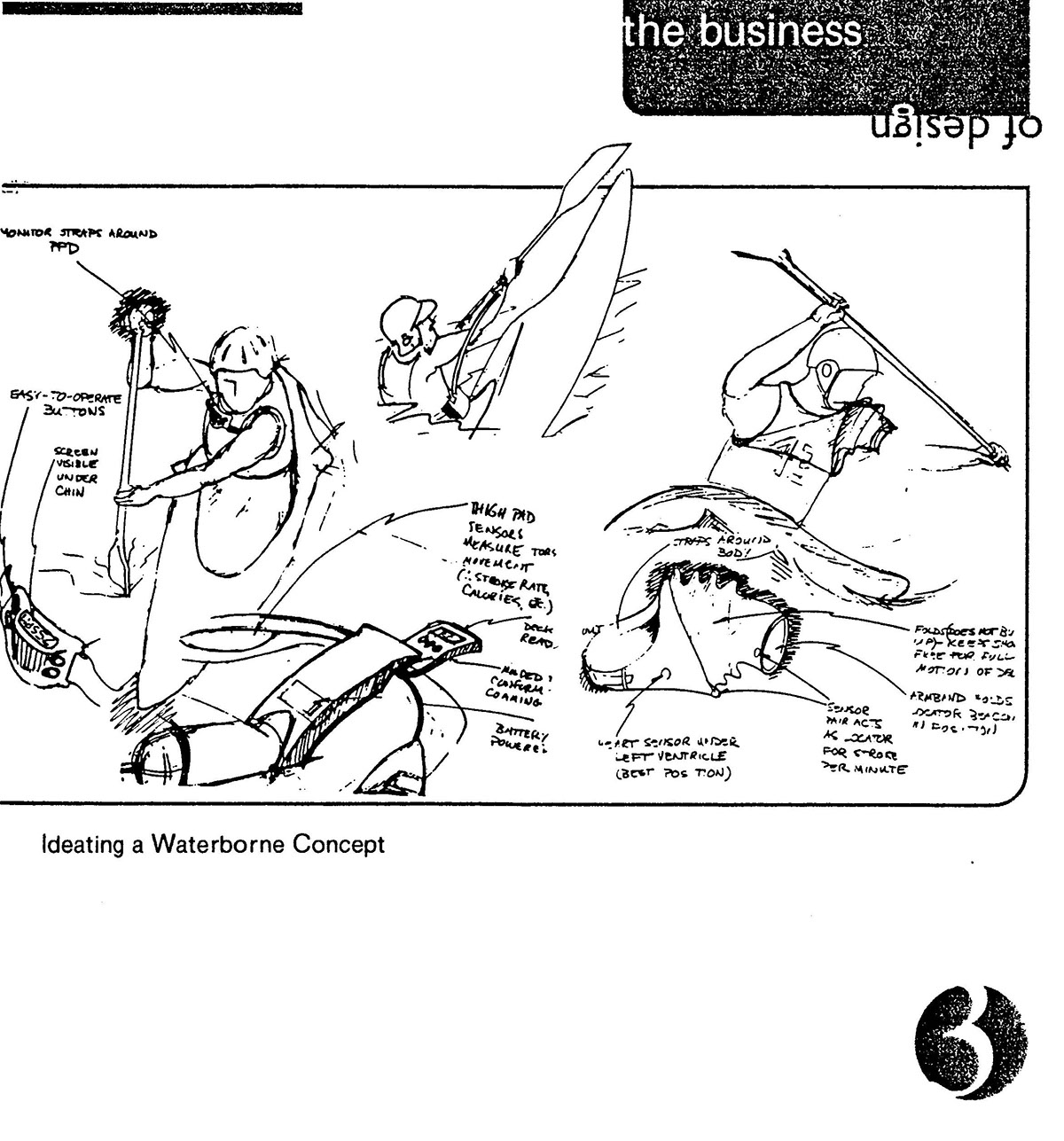
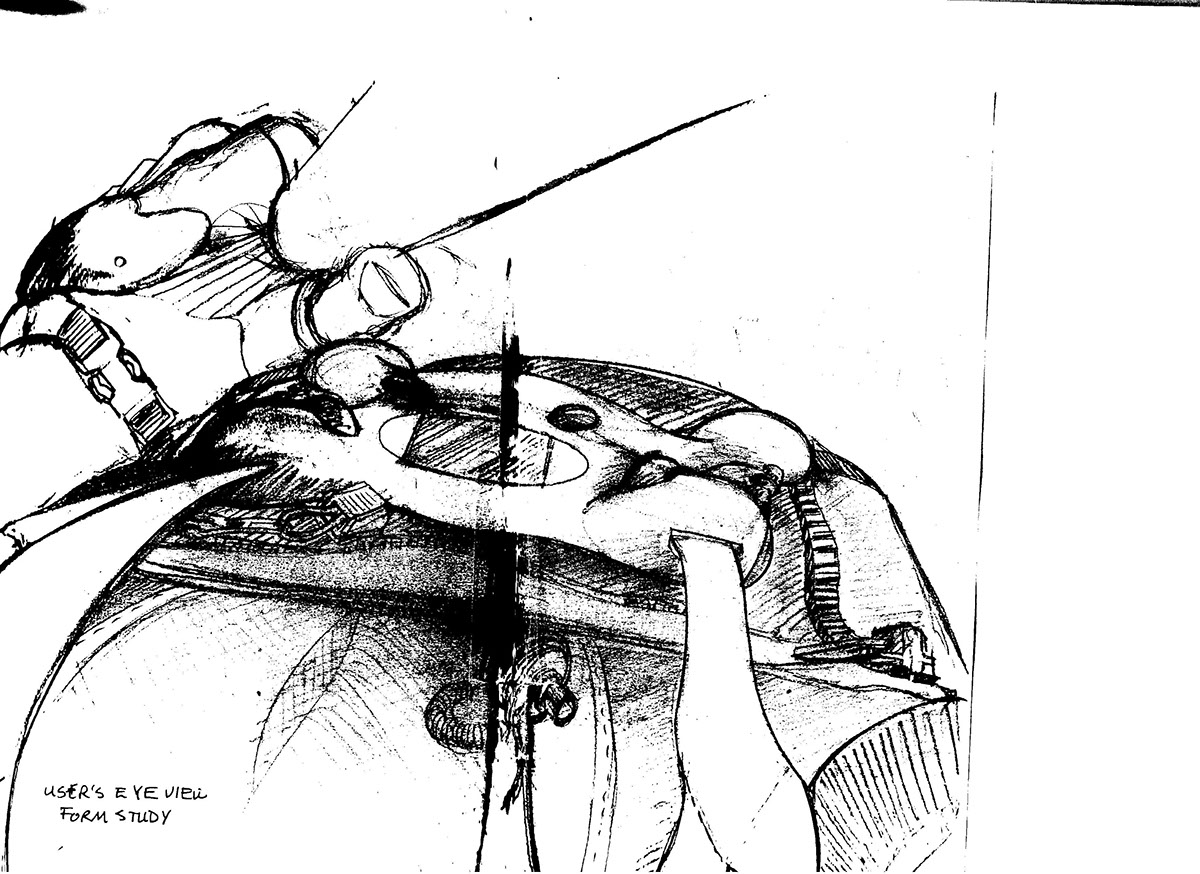
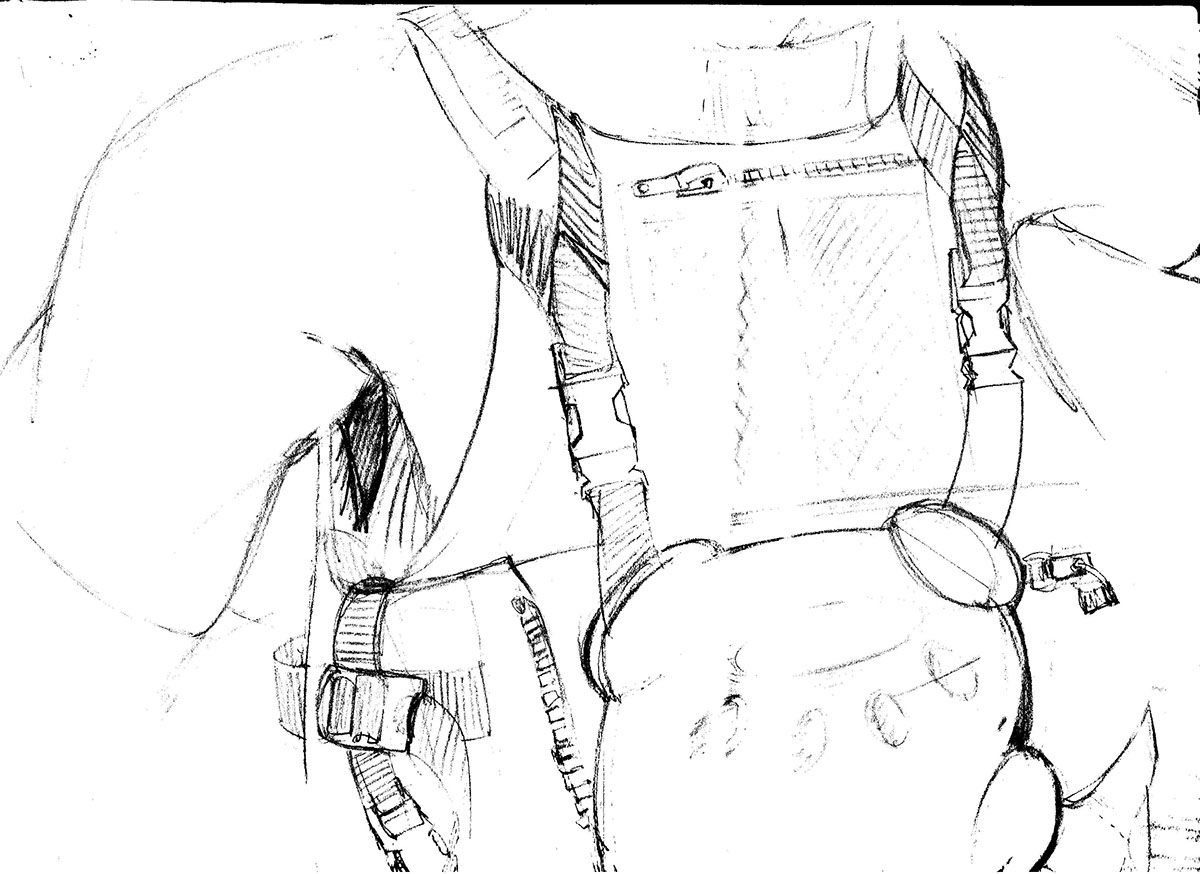
The solution shocked and excited paddlers.
Customers got what they wanted
• Profitably met the target price-point range
• Enlarged prospect market to all athletes + consumer paddlers
• National Team Director told me the market analysis provided high value data
• Program Director kept the business analysis as a teaching tool
• Earned our graduating year's Benchmark Award
• Enlarged prospect market to other sports where there is a chaotic environment
• Captured the imagination of the athletes, the sport and the industry
• Captured the imagination of the athletes, the sport and the industry
Business Outcome
Today (Sept 2014), revealing that this 1999 concept was actually a next-generation collaborative social web tool designed to boost the popularity of slalom. A "social web wearable" before there was such a thing.
. . . The means to link the athlete to the coach, the data to officials, and data/media stream to spectators—creating a media platform tying athletes, coaches, spectators, and sponsors into a collaborative social web, by providing the right information, tools, and data when needed, to help slalom grow in popularity.

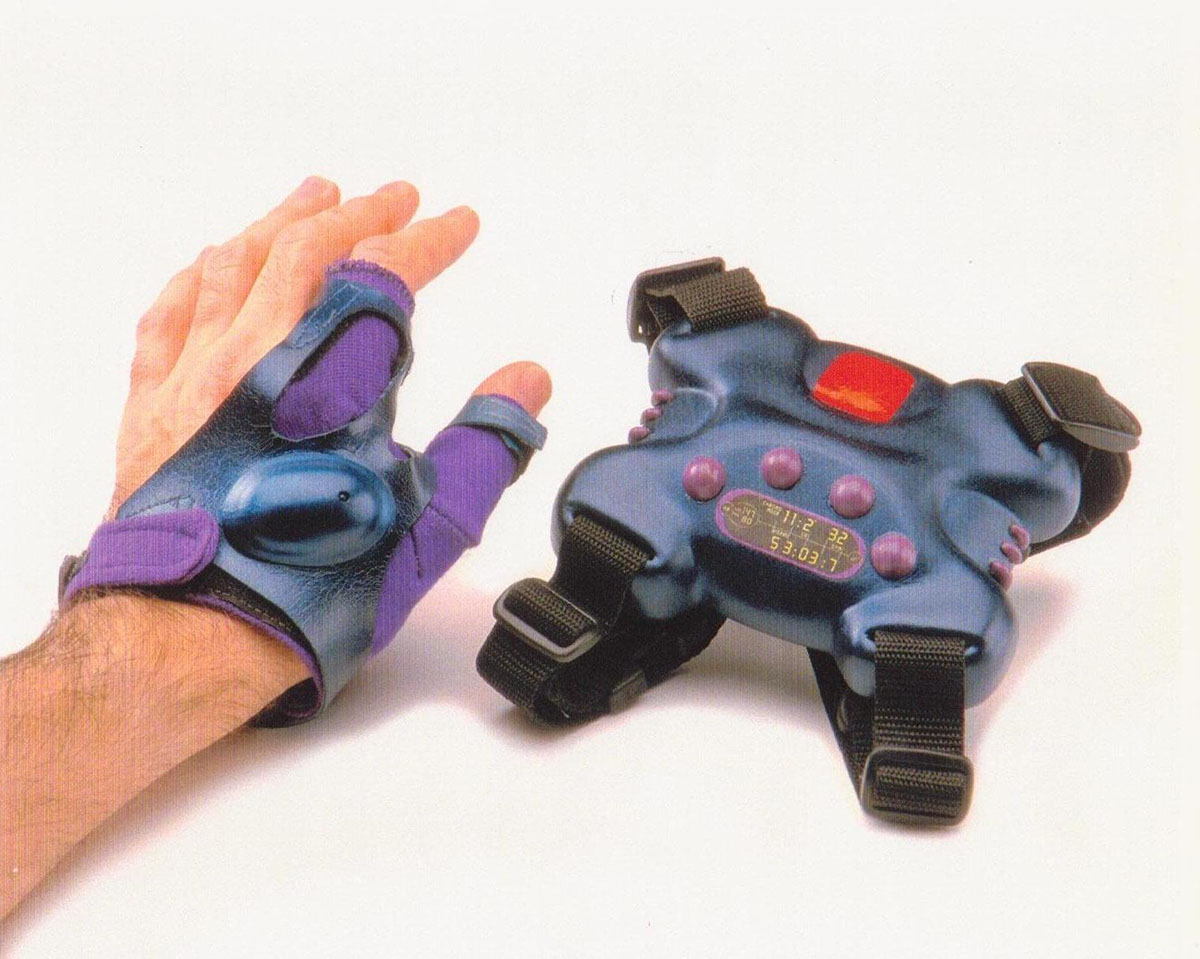
** In 2007, Beurer introduced the PM100 Heart Rate Monitor, a glove-mounted unit that closely matches my 1999 glove component.
